Precedent Importance: Key in Shaping British Legal Systems
Updated On: October 23, 2025 by Aaron Connolly
Defining Precedent Importance
Legal precedent really sits at the heart of how courts decide cases. Judges look to past rulings to guide what happens next.
This principle keeps the law consistent, but it also leaves space for the law to change when needed. It’s a balancing act, honestly.
What Is a Legal Precedent?
A legal precedent is just a court’s decision that sets a rule for future cases with similar facts. When judges rule, they create case law that other courts have to follow or at least think about.
The system runs on a principle called stare decisis. That’s Latin for “to stand by things decided.” It means judges have to respect what came before when facing similar legal questions.
There are two main types of precedent:
- Binding precedent – Lower courts have to follow decisions from higher courts.
- Persuasive precedent – Courts can consider these, but they aren’t forced to follow them.
Higher courts set binding precedent for all the courts below. For example, Supreme Court decisions bind every lower court. District courts have to stick to what their circuit court says.
Precedents come from written court opinions. These documents, full of reasoning, become part of the legal system’s record. Judges read them closely when deciding new cases.
Why Is Precedent Important in Law?
Precedent gives our legal system a sense of predictability. People and businesses can look at previous cases and get a pretty good idea of how courts might rule.
Some big benefits come from this setup:
- Laws get applied the same way in different courts.
- Judges are less likely to make random or unfair decisions.
- Public trust in the justice system grows.
The system tries to be fair by treating similar cases the same way. Ideally, your outcome shouldn’t depend on which judge you get.
Precedent also saves time. Judges don’t have to rethink every common issue from scratch. They can lean on reasoning from earlier cases.
This helps courts deal with heavy workloads. Judges can resolve straightforward disputes quickly, leaving more time for the tricky stuff.
Linking Precedent to the Rule of Law
Precedent helps keep the rule of law strong by making sure the law stays consistent. The rule of law says everyone gets treated the same, no matter who they are.
Without precedent, courts might decide identical cases in totally different ways. That would make people lose faith in the justice system.
Precedent backs up the rule of law by:
- Making sure everyone gets treated equally under established principles
- Protecting against judges’ personal preferences
- Creating a stable legal framework so society can function
Still, precedent isn’t set in stone. Courts can overturn old decisions if they turn out to be wrong or just don’t work anymore.
This mix of sticking to the rules but allowing change keeps the law relevant. As society changes, the law slowly adapts. Precedent makes sure that change isn’t sudden or chaotic.
The Role of Stare Decisis
Stare decisis really shapes how courts stick to earlier decisions when they handle new cases. This doctrine works in two main ways: courts at the same level can influence each other, and higher courts set rules that lower courts have to follow.
Understanding Doctrine of Stare Decisis
Stare decisis means “to stand by things decided.” Courts have to follow legal decisions from earlier cases.
This doctrine keeps judicial decision-making steady across similar cases. Judges look at what happened before when they face a new dispute.
This system stops judges from making rulings based on their own views. Instead, legal reasoning builds up over time.
The most important part is the ratio decidendi – the legal reasoning that supports a court’s decision. That’s the bit future courts have to follow.
Some real perks of stare decisis:
- Legal outcomes become more predictable
- People get treated equally under the law
- Courts can work more efficiently
- The public feels more confident in the justice system
Without this doctrine, every legal question could have a totally different answer. People and businesses need steady rules to plan their actions.
Horizontal Stare Decisis Explained
Horizontal stare decisis is when courts at the same level follow each other’s decisions. This keeps things consistent among courts in the same area.
For example, if one circuit court makes a decision, other circuit courts might follow that when they see a similar case. But it’s not a hard rule like with vertical precedent.
Judges treat these decisions as persuasive precedent. They can choose to follow another court’s reasoning or not.
A few key points about horizontal stare decisis:
- Courts can voluntarily follow similar rulings
- There’s peer influence among equal courts
- Legal interpretation stays pretty consistent in a region
- Judges can still go their own way if they think it’s right
This approach helps keep the law clear across regions. It avoids confusing the public with conflicting decisions.
But sometimes, courts decide not to follow horizontal precedent if they find stronger reasoning or if circumstances have changed.
Vertical Stare Decisis in Practice
Vertical stare decisis means higher courts set binding rules for all the courts below them. Superior court decisions become mandatory precedent.
The UK Supreme Court sits right at the top, setting rules that all lower courts, including the Court of Appeal and High Court, have to follow.
Here’s how the hierarchy looks:
| Court Level | Binds These Courts | Bound By |
|---|---|---|
| UK Supreme Court | All lower courts | Previous Supreme Court decisions |
| Court of Appeal | High Court, Crown Court | Supreme Court only |
| High Court | County Court, Magistrates’ | Supreme Court, Court of Appeal |
If a lower court judge ignores binding precedent, their decision can get overturned on appeal. That’s a strong reason to stick to established law.
Vertical stare decisis provides:
- Clear legal authority from top to bottom
- Predictable outcomes if someone appeals
- Uniform law application nationwide
- Respect for how the court system is set up
Only higher courts can overturn their own earlier decisions or those of lower courts.
Types of Precedent
Courts use different kinds of precedent to help with their decisions. Binding precedent is a must-follow rule, persuasive precedent offers helpful guidance, and obiter dicta gives extra context that might shape future rulings.
Binding Precedent and Its Impact
Binding precedent sets rules that lower courts have to stick to. When a higher court makes a decision, every court below it in the same legal system must use that ruling for similar cases.
This all works through a clear hierarchy. Supreme Court decisions bind all lower courts. Court of Appeal rulings have to be followed by the High Court and below.
The doctrine of stare decisis keeps this running smoothly. It basically means “let the decision stand.”
Some key things about binding precedent:
- It creates rules that future cases must follow
- It only applies within the same legal system
- Lower courts can’t just ignore it
- Lawyers and clients get more certainty
For example, if the Supreme Court decides how to interpret a contract, every lower court has to use that same method. This stops courts from clashing and keeps the law steady.
Binding precedent only covers the ratio decidendi – the core legal reasoning behind the decision. Courts pull out this reasoning and use it for new cases with similar facts.
Persuasive Precedent in the Courts
Persuasive precedent gives courts advice, but it doesn’t force them to follow. Judges can decide whether to use these decisions based on their quality.
Several sources can provide persuasive precedent. Decisions from other countries often offer useful ideas. A Scottish court might look at what English courts have done, or UK courts might check out American cases.
Courts at the same level also create persuasive precedent for each other. High Court judges often consider what their colleagues have said, but they don’t have to agree.
Common sources of persuasive precedent:
- Foreign court rulings
- Academic legal writing
- International tribunal decisions
- Old case law from different times
The strength of persuasive precedent really depends. Well-argued decisions from respected courts carry more weight than weak ones. Judges usually explain why they accept or reject persuasive precedent.
Judges look at the quality of reasoning, how similar the facts are, and the reputation of the court that made the decision. This flexibility lets legal systems learn from each other without losing their own way.
Obiter Dicta and Its Effects
Obiter dicta are comments judges make “by the way” – things that don’t directly affect the outcome but add observations or hypothetical scenarios.
Unlike the ratio decidendi, obiter dicta isn’t binding. Still, it can influence how the law develops, especially if senior judges say it.
Obiter dicta usually pops up when judges talk about hypothetical cases or broader legal ideas. Sometimes, they’ll explain how their decision might change if the facts were different.
Typical forms of obiter dicta:
- Comments on what might happen in other scenarios
- Talk about different legal approaches
- Thoughts on how the law could develop
- Academic-style commentary on principles
Lawyers pay close attention to obiter dicta from top courts. Even though it’s not binding, these comments often hint at where the law is headed.
Sometimes, persuasive obiter dicta gets picked up by later courts and eventually becomes binding law.
The line between ratio decidendi and obiter dicta isn’t always obvious. Lawyers and judges need to dig into judgments to figure out what’s binding and what’s just extra guidance.
How Precedent Shapes Judicial Decision-Making
Precedent really changes how judges approach cases. It gives them frameworks to follow and helps keep legal principles steady across the system.
This way of working means judges build on established law but still have room for legal evolution.
Influence on Judicial Reasoning
Precedent is the backbone of how judges work through tough legal problems. When you look at judicial reasoning, you’ll see judges lean heavily on earlier decisions.
The doctrine of stare decisis tells judges to follow what higher courts have already decided. This sets up a logical structure where every legal argument connects back to existing case law.
Judges use precedent in a few main ways:
- They compare the facts of the case to earlier cases
- They pull out the legal principles from those rulings
- They explain when a case is different enough to go a new way
This helps judges avoid decisions based just on personal opinion. Instead, they ground their thinking in established authority.
When judges write their opinions, they usually mention several precedents. It shows how their ruling fits into the bigger picture.
Forming Legal Principles
Precedent shapes the big ideas that guide the legal system. By applying and refining decisions over time, judges build up long-lasting legal doctrines.
Major legal principles develop through precedent by:
- Setting ground rules with landmark cases
- Tweaking those principles as new cases come up
- Adjusting old rules to deal with new situations
For instance, the principle of equal protection grew out of cases like Brown v. Board of Education. That decision broke with earlier precedent and set new constitutional standards.
Lower courts then take these principles and use them in similar cases. Over time, this creates a detailed framework of rules.
As precedents pile up, they build what we call the common law. This judge-made law adds to written statutes and constitutional rules.
Maintaining Legal Consistency
Consistency stands out as one of precedent’s most vital roles in judicial decision-making. Without precedent, judges could hand down wildly different results for similar cases, depending on who’s on the bench.
Precedent keeps things consistent by:
- Making lower courts follow decisions from higher courts
- Creating predictable outcomes for similar legal issues
- Stopping arbitrary or contradictory rulings
| Court Level | Precedential Authority |
|---|---|
| Supreme Court | Binding on all lower courts |
| Appeals Courts | Binding on trial courts in jurisdiction |
| Trial Courts | No binding precedential value |
This hierarchy keeps legal principles uniform across courts. People can look at earlier cases to guess how their own might turn out.
When a court breaks from precedent, it has to explain itself. That requirement keeps the law steady but leaves room for change when it’s needed.
The Hierarchy of Courts and Precedent

Court systems work like a ladder. Higher courts make the rules, and lower courts have to follow them.
The Supreme Court sits at the top, handing down decisions that bind everyone below.
Higher Courts Setting Precedents
Higher courts set the legal rules that shape future cases. When these courts rule, they create binding precedents.
The court hierarchy breaks down into three main levels:
- Supreme Court – Makes the final call on legal questions
- Appellate Courts – Review what happened in trial courts
- Trial Courts – Handle cases first
Each higher level tells the lower ones what to do. This setup creates a clear chain of command.
Higher courts do more than just decide individual cases. They lay down legal principles that other judges must use when similar issues pop up.
Key features of higher court authority:
| Court Level | Binding Power | Scope |
|---|---|---|
| Supreme Court | All lower courts | Entire jurisdiction |
| Appellate Courts | Trial courts only | Regional areas |
| Trial Courts | None | Individual cases |
Lower Courts’ Obligations
Lower courts have to stick to the legal rules set by higher courts. This duty really makes precedent work in practice.
Trial judges can’t just ignore Supreme Court or appellate court decisions. Even if they disagree, they still have to follow those precedents.
Lower courts must:
- Apply binding precedents from above
- Use the same legal logic for similar cases
- Only distinguish cases if the facts are truly different
This system keeps things from getting chaotic. Otherwise, judges might reach opposite results on the same legal question.
Lower courts can decide new legal issues when nobody above has ruled yet. Once a higher court weighs in, though, the precedent becomes binding.
The doctrine of stare decisis—which means “stand by things decided”—captures this perfectly. Judicial authority flows down the ladder, not up.
Supreme Court Authority
The Supreme Court sits at the top of the legal system. Its decisions bind every other court, no exceptions.
Supreme Court precedents carry a special weight. They’re the final say on legal interpretation, and no other court can overturn them.
Supreme Court precedents:
- Even bind the Supreme Court in future cases
- Only the Supreme Court can change them
- Apply nationwide, everywhere
The Supreme Court doesn’t take every case. It picks the ones with big legal questions or where lower courts disagree.
When the Supreme Court rules, that’s the law of the land. All judges, lawyers, and officials have to follow.
The Supreme Court only departs from its own precedents in rare situations:
- If the original decision was clearly wrong
- If society’s changed a lot since then
- If new evidence shows the precedent is harmful
By moving carefully, the Court keeps things stable but lets the law grow when it has to.
Precedent in Common Law and Civil Law Systems
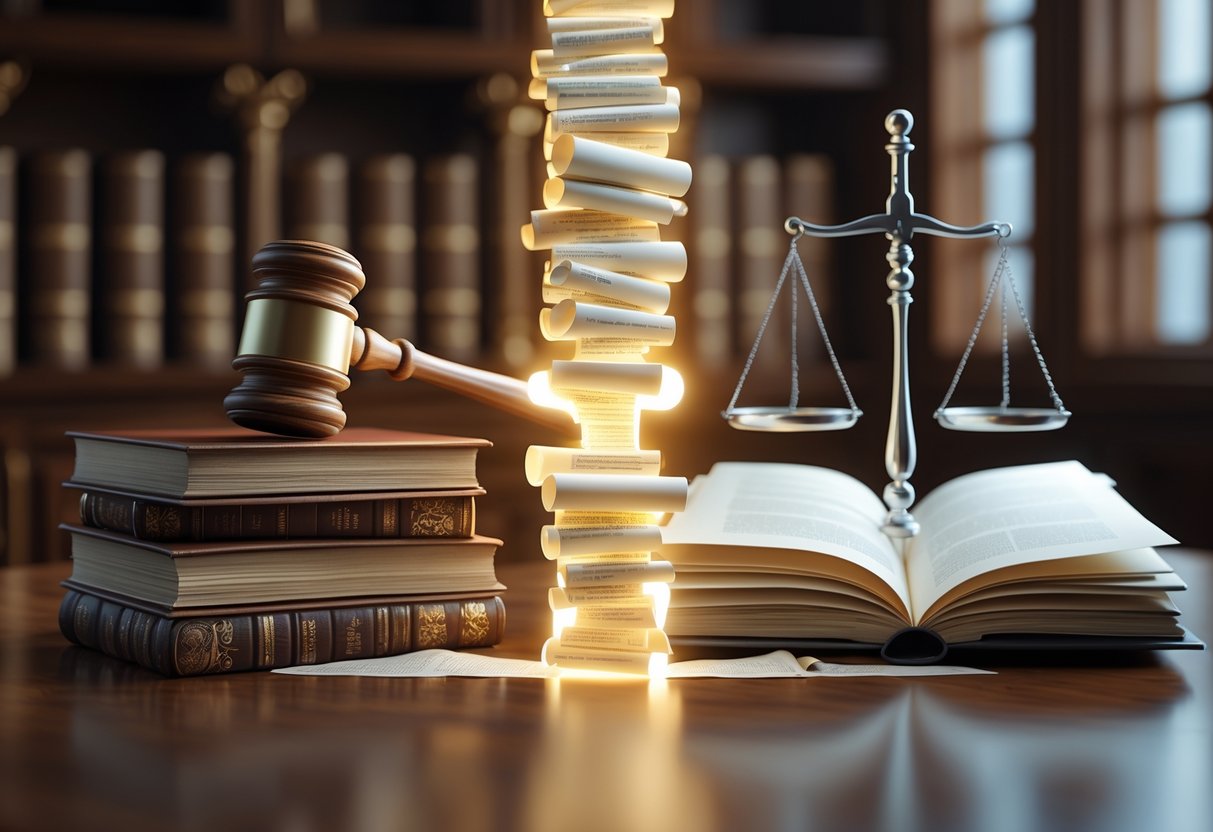
The world runs on two main legal frameworks that treat precedent in very different ways. Common law systems lean heavily on past court decisions, while civil law systems put written codes and statutes first.
The Common Law Tradition
Common law systems make precedent the backbone of legal decisions. Judges have to follow higher court rulings in similar cases.
This approach creates what we call “case law.” When a court rules, that decision becomes part of the legal fabric. Later judges have to consider these past cases.
Key features of common law precedent:
- Binding authority from above
- Persuasive influence from courts at the same level
- Evolutionary development through judicial interpretation
The United States, UK, and Canada all use common law. Lawyers there spend a lot of time digging up old cases to back up their arguments.
Take a slip-and-fall at a grocery store. If courts have said shops must keep things safe, lawyers will cite those cases to prove their point.
This system lets the law evolve slowly. New situations bring new precedents, which guide future decisions.
Civil Law System Contrasts
Civil law systems do things differently. These countries focus on written codes and statutes, not past court decisions.
France, Germany, and most of Europe use civil law. Judges there mainly interpret legal codes instead of following previous rulings.
Civil law characteristics:
- Comprehensive legal codes come first
- Limited precedent influence on decisions
- Legislative supremacy over judges
Precedent exists in civil law, but it doesn’t carry much weight. Past decisions might help, but judges aren’t bound by them.
In contract disputes, a French judge checks the Civil Code before anything else. Previous cases might help, but the written law wins.
This approach makes outcomes more predictable since everyone can read the same codes. Still, it might be slower to adapt to new problems than common law.
Landmark Cases Demonstrating Precedent Importance
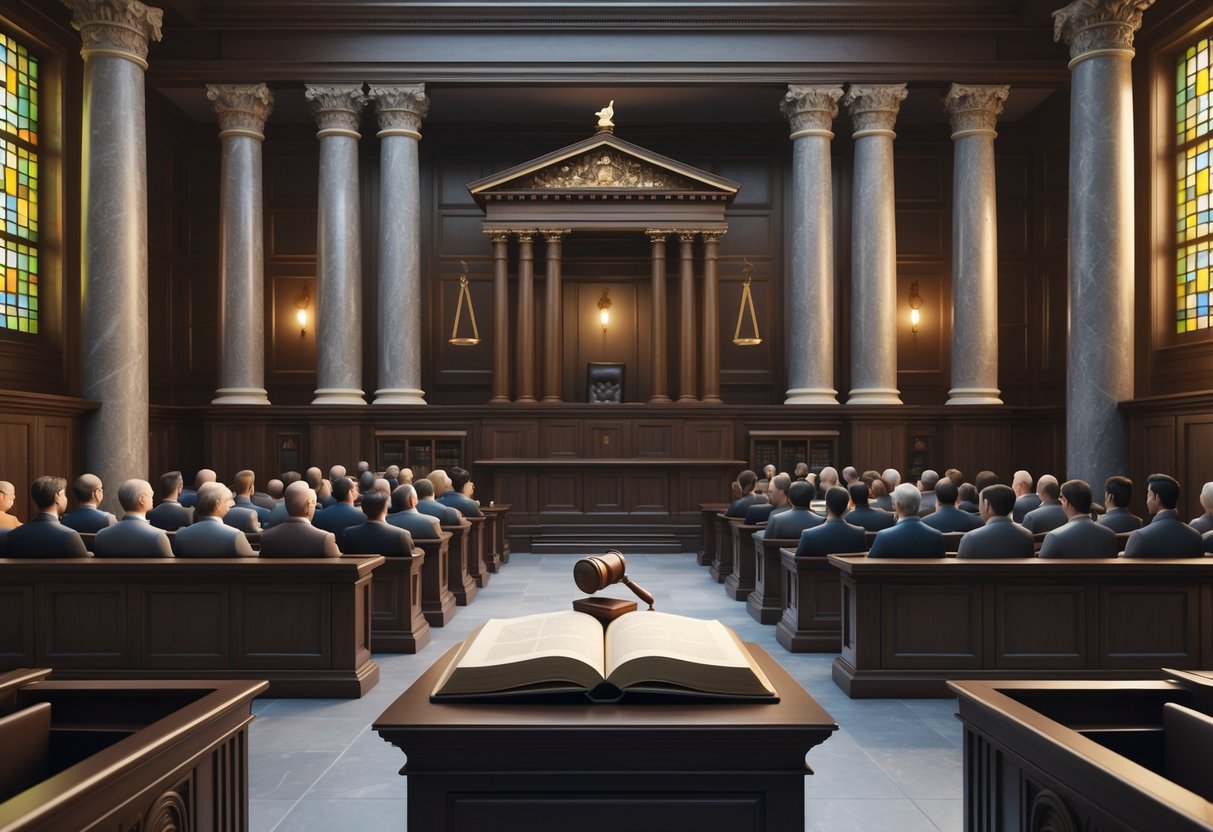
A handful of groundbreaking cases really show how precedent shapes our legal system—and society. Brown v. Board of Education and Plessy v. Ferguson are classic examples, showing how courts can reinforce or overturn harmful practices through precedent.
Brown v. Board of Education
Brown v. Board of Education (1954) stands as a powerful example of precedent correcting social wrongs. The Supreme Court ruled that segregated schools violated the Equal Protection Clause of the 14th Amendment.
The Court directly overturned the “separate but equal” idea from Plessy v. Ferguson. They saw that separating kids by race actually caused harm. Separate facilities, they said, could never really be equal.
Key impacts of this precedent:
- Ended legal school segregation in the U.S.
- Sparked the broader civil rights movement
- Set the bar for future equality cases
- Showed courts could challenge old, unjust precedents
The decision proved that precedent isn’t set in stone. Courts can change their minds as society’s values shift.
Plessy v. Ferguson
Plessy v. Ferguson (1896) created the “separate but equal” rule that kept racial segregation alive for almost 60 years. Homer Plessy challenged a Louisiana law forcing him to ride in a separate railway car because he was Black.
The Supreme Court said segregation was fine as long as things were “equal.” That ruling let states keep schools, restaurants, and public spaces divided by race.
This case shows how precedent can entrench discrimination:
| Aspect | Impact |
|---|---|
| Duration | Lasted 58 years until Brown v. Board |
| Scope | Applied to schools, transport, public spaces |
| Effect | Legalised widespread segregation |
This precedent caused decades of harm before courts finally saw its flaws. It’s a clear reason why courts need to keep examining precedent.
Other Notable Cases
Plenty of other landmark cases reveal precedent’s power to shape society. Loving v. Virginia (1967) struck down laws against interracial marriage, building on Brown’s equality principles.
Miranda v. Arizona (1966) created the rule that police must inform suspects of their rights. That precedent protects millions during arrests.
More recent cases keep this pattern going. Students for Fair Admissions v. Harvard (2023) ended race-based university admissions, overturning decades of precedent on affirmative action.
These cases have a few things in common:
- They tackled basic rights
- They built on or rejected earlier precedents
- They set new legal standards
- They influenced countless later decisions
Each case links past legal decisions to present-day outcomes, showing how much judicial rulings can shape our lives.
Precedent’s Impact on Legal Evolution
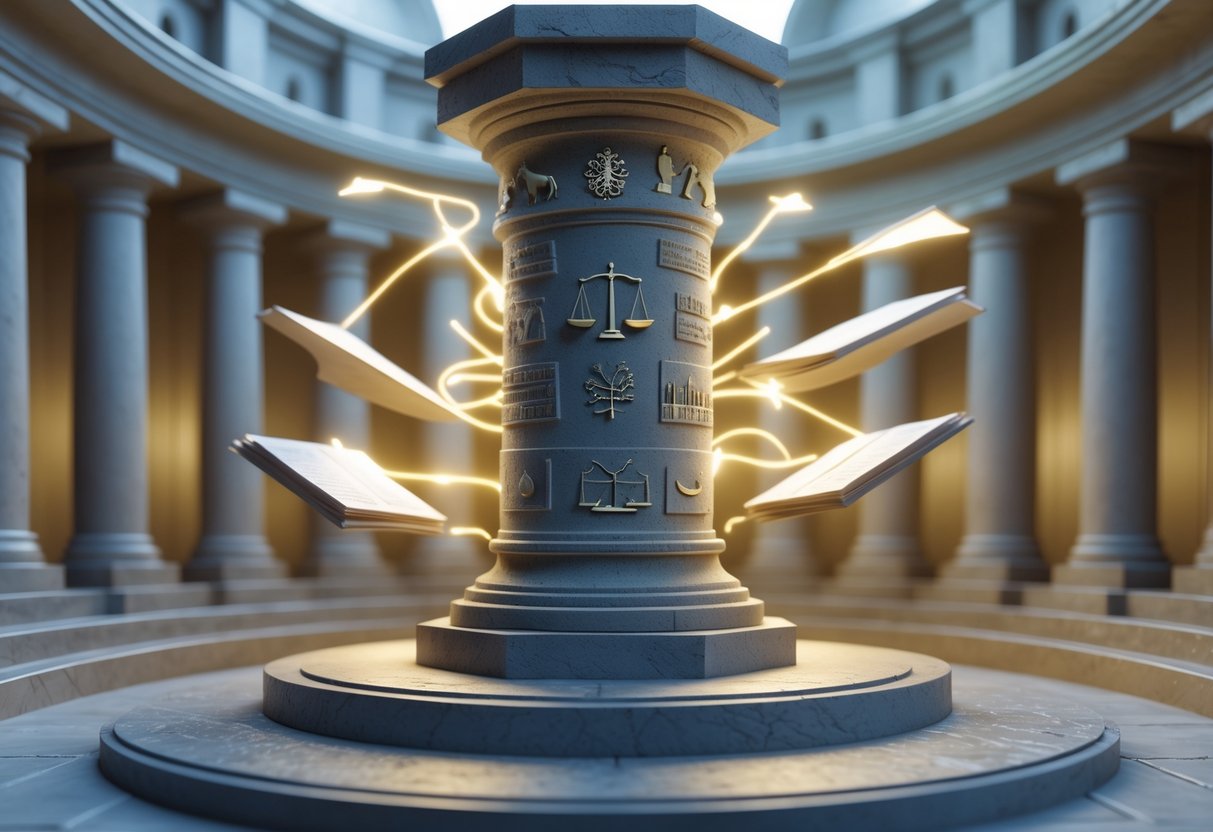
Courts use precedent to steer legal change in a few big ways. They overturn outdated rulings when society demands it, use judicial review to tackle social issues, and adapt old laws to fit new cultural realities.
Overturning Precedent
Courts sometimes overturn precedent when old rulings no longer serve justice or match modern values. This doesn’t happen lightly—they weigh stability against the need for change.
The classic example is Brown v. Board of Education (1954). The Supreme Court tossed out Plessy v. Ferguson (1896), which had allowed racial segregation.
This landmark ruling showed how courts can ditch harmful precedents. The judges saw that segregated schools violated equal rights, even though earlier courts disagreed.
Why courts overturn precedent:
- New evidence proves the old ruling was wrong
- Society’s values have shifted
- The precedent leads to unfair results
- Higher courts spot major legal errors
Courts have to give strong reasons before overturning precedent. This keeps trust in the system while still making room for needed reforms.
Judicial Review and Social Change
Judicial review lets courts decide if laws fit constitutional principles. This power drives big social changes by protecting people’s rights from unfair laws.
Same-sex marriage is a good example. Courts in many countries used judicial review to strike down marriage bans. They found those laws violated equal protection rights.
In the UK, courts have used judicial review to expand rights for LGBTQ+ people. They’ve also protected women’s rights and minority groups with careful legal reasoning.
Judicial review changes things by:
- Letting courts tackle discriminatory laws
- Applying constitutional ideas to modern life
- Forcing governments to update unfair policies
- Setting new precedents for future rights cases
This process moves slowly, but the changes stick. New precedents from judicial review reshape how we see rights and freedoms.
Adaptation to Social and Cultural Norms
Legal systems slowly adapt to social and cultural norms by tweaking precedent. Courts interpret old laws to fit how people actually live.
Technology cases make this clear. Courts have stretched privacy laws to cover mobile phones and online data. They’ve taken old ideas about searching homes and applied them to digital life.
Marriage laws have changed, too. Courts now recognize common-law relationships and update property rules. These shifts reflect real family life, not just old traditions.
Courts adapt by:
- Stretching old laws to fit new situations
- Recognizing changing family structures
- Protecting new forms of speech and communication
- Updating business laws for modern needs
This change happens one case at a time. Each small ruling nudges the law forward. Over time, these tweaks lead to big shifts in how the law works.
Courts have to balance respect for tradition with the reality of modern life. That’s how the law stays relevant.
Precedent and Legal Frameworks
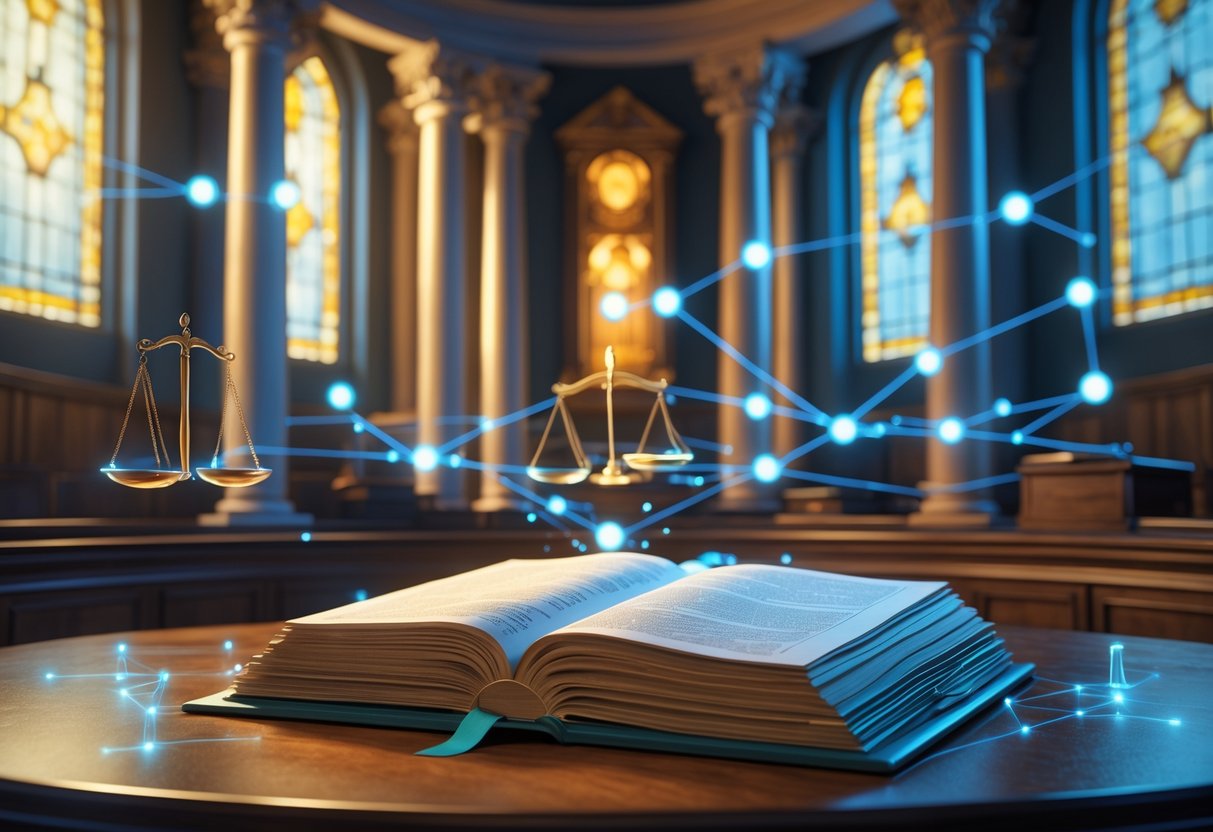
Legal frameworks need precedent to keep systems stable, protect rights, and guide judges. Courts rely on established precedent to keep legal standards consistent, balancing restraint with the flexibility to adapt when needed.
Precedent and Legal Standards
Legal standards grow out of how courts apply precedent over time. When judges use similar reasoning in similar cases again and again, they set benchmarks that shape future rulings.
These standards form the backbone of the legal system. They give lawyers something solid to work with and help regular folks figure out their rights.
Take employment law, for instance. Courts keep ruling on workplace disputes, and each decision adds a bit more clarity for both employers and workers.
Legal frameworks get stronger as precedent leads to more predictable results. That predictability means you’re less likely to get a surprise in court, no matter which judge you face.
Think of it like stacking blocks. Each court decision fits on top of the last, making the legal structure sturdier and more complete.
Judges have to follow precedent from higher courts in their area. That rule keeps legal standards steady across the whole system.
| Type of Standard | Source | Binding Force |
|---|---|---|
| Statutory | Parliament | Mandatory |
| Common Law | Court Decisions | Varies by Court Level |
| Regulatory | Government Agencies | Within Agency Scope |
Judicial Restraint and Discretion
Judicial restraint happens when judges stick to existing precedent instead of inventing new legal rules. This keeps the legal system from getting too wild or unpredictable.
Judges who use restraint focus on what’s been decided before. They don’t try to make sweeping policy changes—that’s usually for lawmakers.
But at times, judges need judicial discretion to handle cases that don’t fit the mold. Some situations are just too new or unusual for old precedent to cover everything.
Striking a balance between restraint and discretion shapes how legal frameworks change over time. If judges play it too safe, the law can turn stiff and out of touch.
Too much discretion is risky, though. People want to know their case will get the same treatment as someone else’s.
Good judges start with precedent. Then they think through whether the case in front of them needs a different approach.
Warning: If courts ignore precedent without a solid reason, they risk losing the public’s trust.
Framework for Legal Protection
Precedent builds a framework that gives legal protection to people and organizations. You get protection because you know courts will uphold established rights.
Constitutional precedent safeguards basic rights. When top courts set these standards, lower courts have to stick to them in later cases.
The framework works through things like:
- Binding decisions from higher courts
- Persuasive authority from other places
- Established principles that steer interpretation
Legal protection gets stronger when precedent spells out rights and remedies clearly. People can lean on these protections when making big choices.
Employment rights, property rights, and civil liberties all rely on precedent to actually work in real life. Without consistent decisions, these rights would be shaky.
Courts use precedent to make sure legal frameworks protect vulnerable people. Anti-discrimination law, for example, grows through cases that define protected classes and banned behaviors.
The framework also guards against random government actions. When precedent limits what officials can do, it adds another layer of protection for everyone’s freedom.
Precedent in Modern Jurisprudence
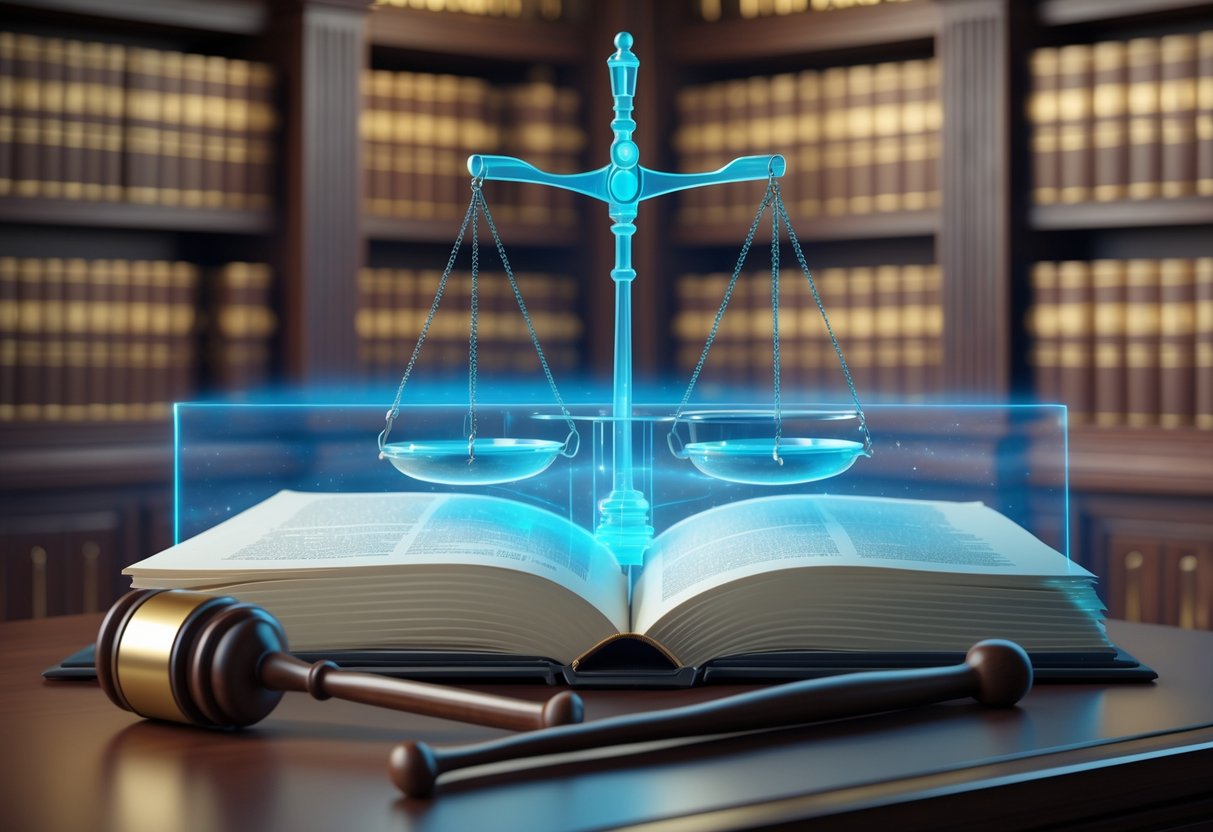
Modern legal systems lean heavily on precedent to keep things stable and efficient, even as the world changes fast. Judges use past rulings to speed up cases, tackle new tech problems, and update old legal ideas for today’s issues.
Judicial Efficiency and Consistency
Courts save a lot of time and effort by sticking to precedent instead of starting every case from scratch. Judges can spot relevant decisions quickly and use tried-and-true logic.
This creates predictable outcomes for similar cases. If courts stick to precedent, lawyers can give clients a decent idea of what to expect.
The doctrine of stare decisis means:
- Lower courts must follow higher court rulings
- Similar cases get similar treatment
- Legal rules stay steady over time
Binding precedent from higher courts takes the guesswork out of things for lower courts. For example, a magistrate’s court follows Court of Appeal decisions, so everyone knows the pecking order.
Persuasive precedent from other countries or courts can help, too. UK judges sometimes look at Australian or Canadian decisions when facing something new.
Precedent in Contemporary Legal Issues
Technology throws new curveballs that challenge how precedent works. Judges have to stretch old privacy laws to cover social media and data breaches.
Digital evidence cases push judges to adapt rules written centuries ago. Precedent helps them stay consistent, even with new stuff like:
- Cryptocurrency
- Online harassment
- AI decisions
- Cloud storage rights
Human rights issues now play a bigger part in how courts use precedent. The Human Rights Act 1998 forces UK judges to weigh old precedent against basic rights.
Environmental law shows precedent evolving. Climate change lawsuits build on old tort cases, but the stakes and facts are totally new.
Medical technology keeps forcing courts to rethink precedent about consent, treatment, and end-of-life choices. Judges have to apply old principles to brand-new medical problems.
Future Trends in Precedent Application
Global legal influence is growing. Courts look at foreign cases more often, especially in international human rights disputes.
Cross-border cases make courts think hard about how precedent works online. Remote work and internet deals blur old boundaries.
Artificial intelligence tools might soon help judges find relevant precedent even faster. Legal databases already speed up research compared to the old days.
Specialised courts like those for IP or cybersecurity are building their own lines of precedent. These focused rules help with tricky technical cases.
Precedent will probably get more flexible as society changes quicker. Courts may need new ways to spot when an old precedent doesn’t fit anymore, but still keep things stable.
Criticisms and Challenges of Precedent
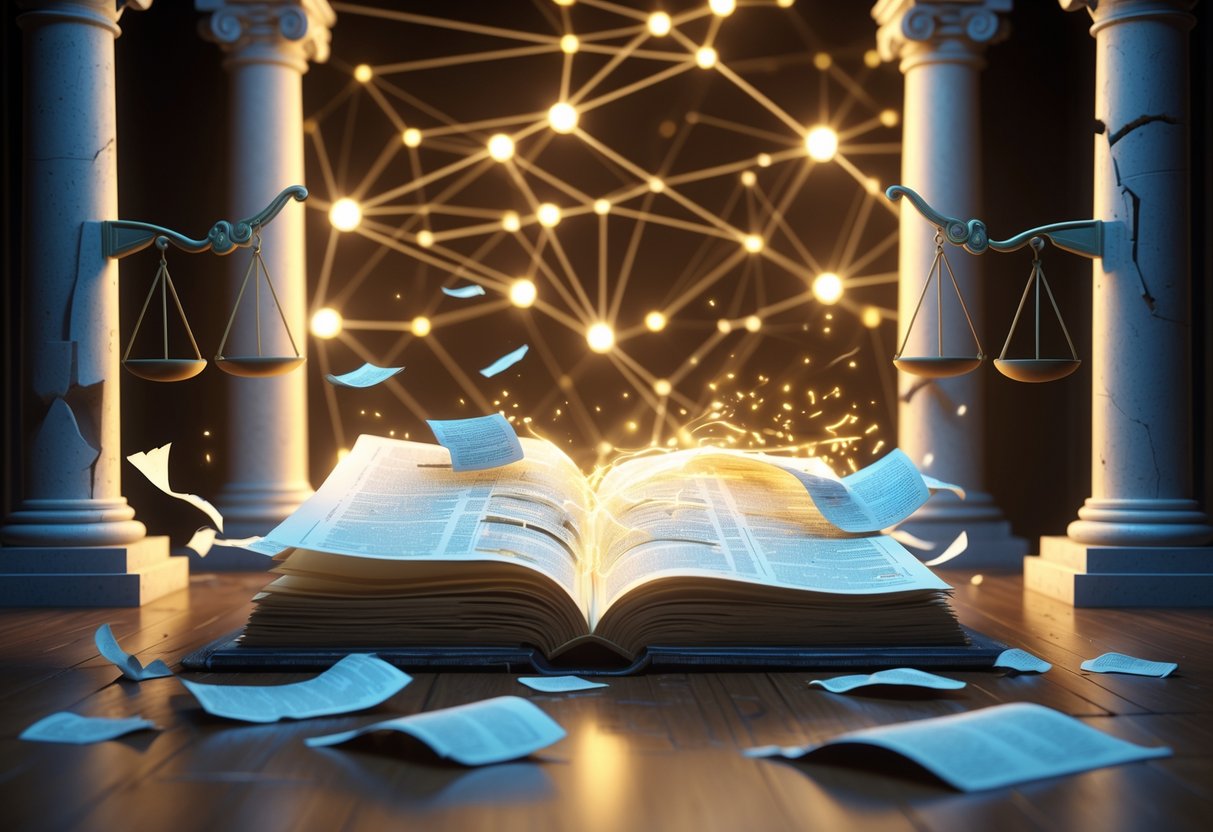
Precedent brings a couple of big headaches. Courts can get stuck in the past, and they constantly juggle the need to be consistent with the need to adapt.
Risks of Rigidity and Inflexibility
Legal systems hit a wall when courts follow precedent too strictly. Judges sometimes feel forced to use old rules that don’t work for today’s problems.
Outdated decisions can do real damage. Sometimes courts stick with rulings from decades ago that reflect old values. That can block fair results for people now.
Rigidity shows up in a few ways:
• Slow adaptation – Courts can’t keep up with new tech or social changes
• Unfair results – Judges have to apply old rules even if they don’t fit
• Limited creativity – Courts can’t find new answers for tricky problems
Some judges even say they feel boxed in by precedent. They know a past decision isn’t right, but they’re stuck following it.
It’s a real catch-22. The system meant to keep things fair sometimes does the opposite. Lower courts especially get stuck, since they must obey higher court rulings even if times have changed.
Balancing Continuity with Change
Courts always struggle to balance sticking with precedent and keeping up with society. They need precedent for stability but also need wiggle room for progress.
That balance shapes how law grows. Lean too hard on precedent, and the law gets stale. Ignore it too much, and nobody knows what to expect.
You see this when courts have to:
• Distinguish cases – Find reasons to interpret things differently
• Overrule precedent – Toss out an old decision
• Narrow holdings – Limit how far a past case applies
Different courts take different approaches. Some stick to precedent like glue. Others are more open to tweaking the rules.
It gets even trickier with constitutional cases. These rulings can steer society for decades, but they still need to fit changing values.
Modern legal systems try a bunch of fixes. Some use strict tests before tossing out precedent. Others give judges more leeway in applying old rules to new situations.
Frequently Asked Questions

The doctrine of stare decisis guides how courts decide cases by telling them to follow earlier rulings. Judges need to figure out when a precedent fits and when they can break from it.
How does the principle of stare decisis affect legal decisions?
Stare decisis means “stand by things decided.” Judges follow legal decisions from earlier, similar cases.
This creates stability in the legal system. When courts stick to precedent, people can guess how the law will treat them.
Lower courts must obey higher court decisions in their area. For instance, all UK courts follow House of Lords rulings.
But courts can distinguish cases if the facts are different enough. They can also overturn precedent if social values shift or old decisions turn out to be wrong.
Can you provide an example of how a precedent functions within the legal system?
Say a court decides online contracts are valid without physical signatures. That ruling becomes precedent for future online contract disputes.
When another similar case pops up, judges look at that earlier ruling. They check the facts and reasoning to guide their decision.
If the facts and legal questions line up, the court will probably follow the precedent. That keeps things consistent.
But if the circumstances change, the outcome might be different.
What’s the difference between binding and persuasive precedents?
Binding precedents are rules lower courts have to follow in the same legal system. They come from higher courts and set legal standards.
In the UK, Court of Appeal decisions bind lower courts. Supreme Court rulings bind everyone below.
Persuasive precedents don’t force courts to follow them, but they can influence decisions. These might come from other countries or lower courts with smart reasoning.
Judges look at persuasive precedents when there’s no binding rule. Sometimes they use them to update or clarify the law.
In what ways does judicial precedent contribute to the development of law?
Precedents fill in the blanks where written laws aren’t clear. Courts interpret statutes and set rules for new situations.
Common law grows case by case. Each decision adds to the pool of legal ideas that shape future rulings.
Precedents let law change as society changes, without waiting for lawmakers. Courts can handle tech, social shifts, and new problems.
This keeps law evolving but still consistent. Old precedents get tossed out when they stop making sense.
Could you explain the role of precedent in government policy-making?
Lawmakers look at court precedents when making new laws. They study how courts have interpreted things to spot issues or gaps.
Government legal teams check precedents before suggesting policies. That helps avoid clashes between new laws and what courts have already decided.
Precedents show policymakers what actually works. Court decisions reveal how laws play out in real life.
When courts overturn government policies, those rulings become precedents, too. Future governments have to keep those decisions in mind.
How does a court determine when to follow or overturn a previous precedent?
Courts look at whether the facts in the current case actually line up with the old precedent. If the situations feel pretty different, judges might decide the outcome should be different too.
Judges also ask themselves if the reasoning behind the precedent still makes sense. Sometimes, legal ideas just don’t age well, or society’s values shift, and that can be a good reason to rethink old decisions.
Higher courts, especially the Supreme Court, usually have more leeway to toss out earlier rulings. They can overrule their own past decisions when they think it’s necessary.
There’s always this balancing act between keeping the law consistent and doing what’s fair for the people involved. Occasionally, fairness just wins out, and the court moves away from what came before.

